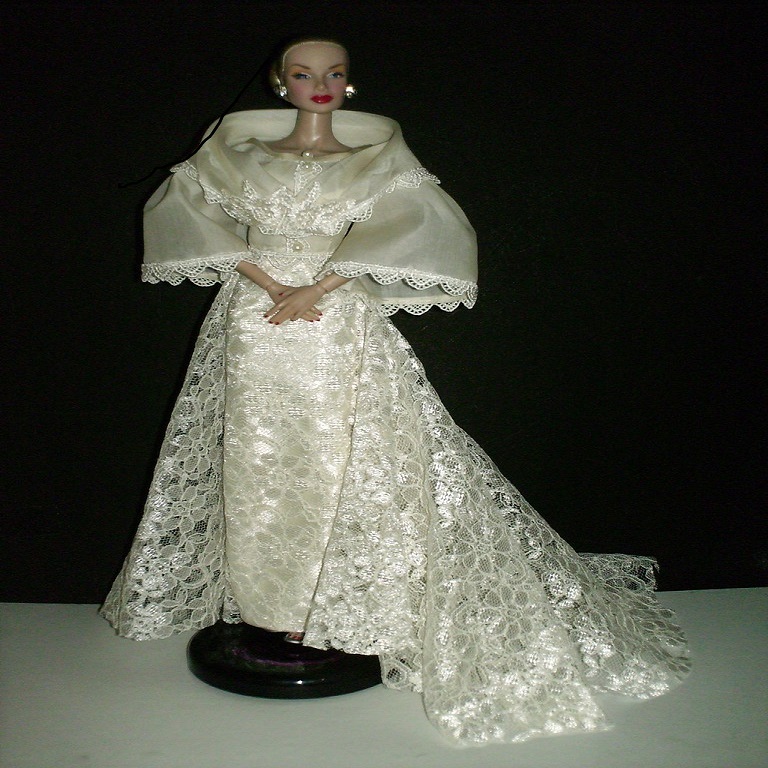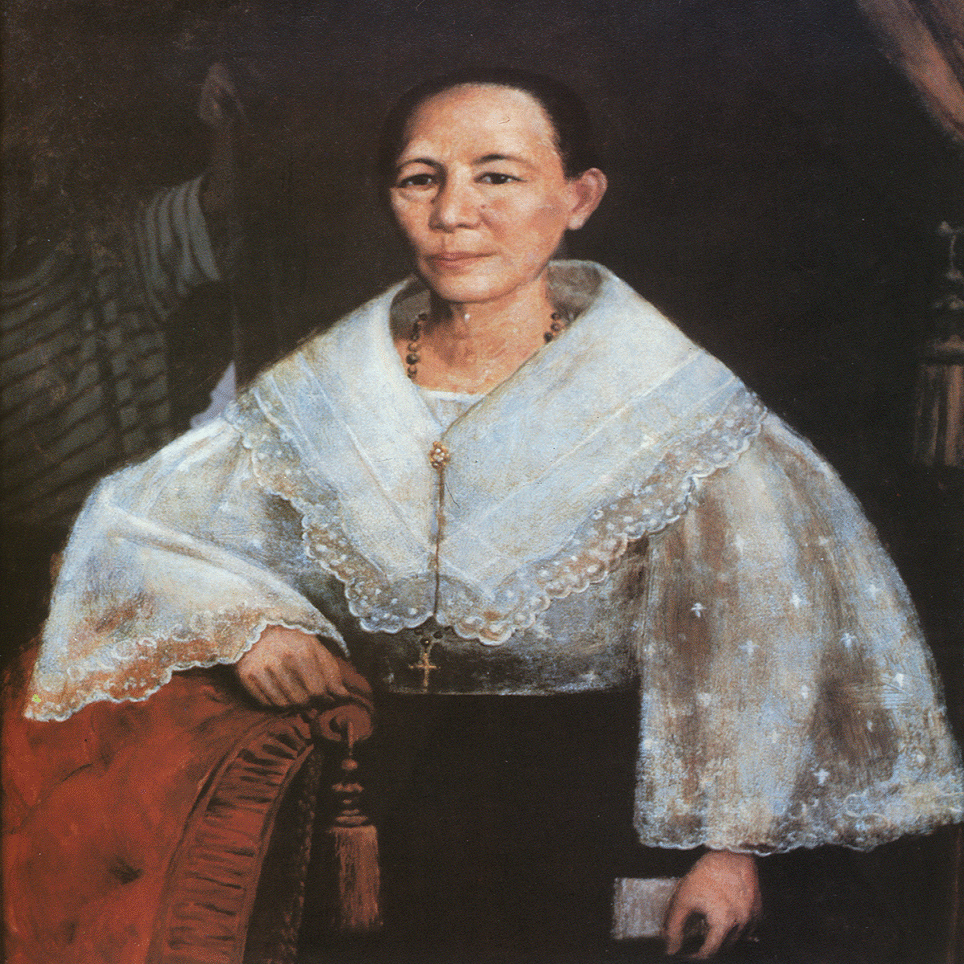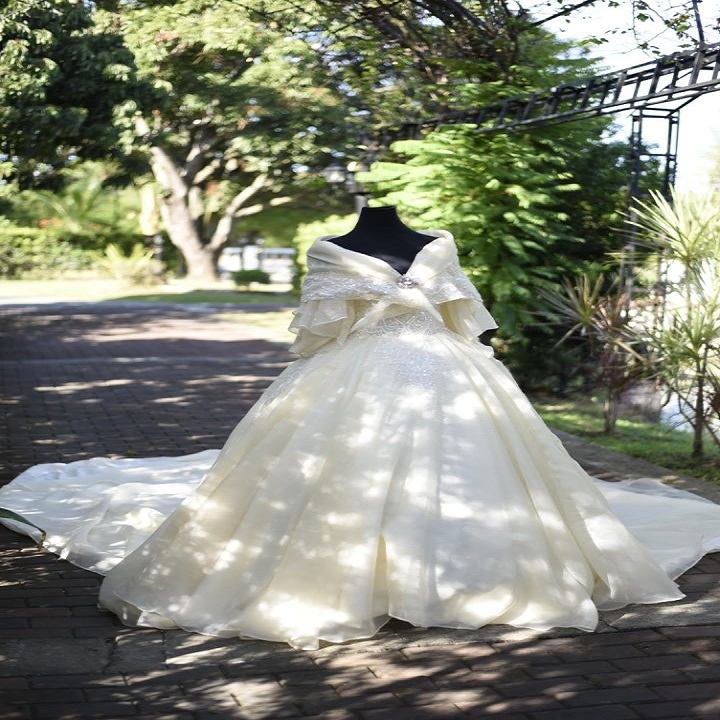EIntroduction
Maria clara dress, an exquisite garment deeply rooted in Philippine history and culture, stands as a testament to the nation’s rich heritage and the fusion of indigenous traditions with foreign influences. This iconic dress, named after the fictional character Maria Clara from Jose Rizal’s novel “Noli Me Tangere,” embodies the grace, modesty, and dignity of the ideal Filipina woman. Its intricate design and intricate details reflect not only a unique sartorial aesthetic but also a complex narrative of Philippine identity.
The Maria Clara dress stands as a profound symbol of Philippine culture and history, revered for its elegance, grace, and enduring significance. Named after the mestiza heroine in Jose Rizal’s novel “Noli Me Tangere,” this traditional attire reflects a blend of Spanish and Filipino influences, embodying the rich cultural heritage of the Philippines.

Origins and Historical Significance
The origins of the Maria Clara dress trace back to the colonial era, specifically during the Spanish occupation of the Philippines in the late 19th century. It was influenced by the conservative European fashion of the time, adapted to suit the tropical climate and cultural sensibilities of the archipelago. The dress is characterized by its modest yet flattering silhouette, often adorned with intricate embroidery and delicate lacework.
Key Features and Design Elements
- Silhouette: The Maria Clara dress typically features a flowing skirt that falls gracefully to the ankles, emphasizing modesty and femininity. The bodice is fitted and often adorned with intricate embroidery, enhancing its aesthetic appeal.
- Fabrics: Traditionally, the dress is crafted from lightweight fabrics such as piña (pineapple fiber), jusi (silk), or organza. These materials not only provide comfort in the tropical climate but also showcase the craftsmanship of Filipino weavers and embroiderers.
- Embroidery and Detailing: One of the most striking features of the Maria Clara dress is its elaborate embroidery known as calado or intricate cutwork. This delicate craftsmanship often decorates the neckline, sleeves, and hemline, showcasing the skill and artistry of Filipino artisans.
- Accessories: Completing the ensemble are accessories such as the pañuelo (scarf) worn over the shoulders, which adds a touch of refinement and cultural authenticity to the attire. Jewelry, typically in the form of gold earrings or necklaces, further enhances the overall elegance of the outfit.
Cultural and Social Significance
Beyond its aesthetic appeal, the Maria Clara dress holds profound cultural and social significance in Philippine society:
- National Identity: The dress symbolizes the amalgamation of Filipino and Spanish influences, reflecting a chapter of the Philippines’ colonial past while asserting its cultural distinctiveness.
- Celebrations and Festivities: It is prominently worn during formal events, cultural celebrations, and traditional weddings, where it serves as a testament to Philippine heritage and values.
- Literary and Artistic Inspiration: Inspired by Jose Rizal’s literary works, the Maria Clara dress has become a muse for artists, writers, and filmmakers seeking to depict the elegance and resilience of Filipino women.
Evolution and Contemporary Revival
While rooted in history, the Maria Clara dress has undergone various reinterpretations over the years. Contemporary designers and fashion enthusiasts continue to celebrate its timeless appeal by integrating modern elements while preserving its traditional essence. This evolution ensures that the Maria Clara dress remains relevant and accessible to a new generation of Filipinos, both domestically and globally.
Preserving Tradition and Heritage
Efforts to preserve and promote the Maria Clara dress are evident in cultural institutions, fashion shows, and educational initiatives across the Philippines. These endeavors not only showcase the craftsmanship of Filipino artisans but also foster a deeper appreciation for the cultural heritage embedded within each stitch and embroidery motif.

Origins and Influences
The Maria Clara dress owes its existence to the confluence of various cultural currents that have shaped the Philippines over centuries. Predominantly inspired by the traditional Spanish attire worn during the colonial period, it also integrates elements from the pre-colonial Baro’t Saya and Kimona. Garments that were prevalent among Filipino women before the arrival of the Spaniards. The dress, therefore, symbolizes a harmonious blend of native Filipino and Spanish fashion sensibilities.
The silhouette of the Maria Clara dress typically features a loose, flowing blouse known as a “camisa,” often made of fine, translucent fabrics like piña (pineapple fiber) or jusi (abaca fiber). Which are meticulously hand-embroidered with intricate floral or geometric patterns. This is paired with a floor-length skirt or “saya,” and sometimes complemented by a panuelo. A square piece of cloth draped around the shoulders and fastened at the neck, serving as a modest covering.
Symbolism and Significance
Beyond its aesthetic beauty, the Maria Clara dress holds profound symbolic value. It represents the ideals of femininity, purity, and respectability cherished within Filipino society. Maria Clara, the namesake character, embodies these virtues—she is depicted as gentle, virtuous, and loyal, reflecting the values Filipinos held dear during the late 19th century. Thus, wearing the Maria Clara dress becomes a way of connecting with these cultural ideals and celebrating the nation’s past.
Moreover, the dress signifies resistance against cultural domination. By adopting and adapting Spanish clothing styles, Filipinos found a subtle means of expressing their identity while under colonial rule. The Maria Clara dress became a symbol of silent rebellion, preserving native identity within the folds of imposed European fashion.
Evolution and Modern Interpretations
While the Maria Clara dress remains deeply associated with historical tradition. Contemporary designers have breathed new life into this classic garment. Infusing it with modernity without compromising its essence. Today, one can find variations that incorporate innovative fabrics, bolder colors, and streamlined silhouettes. Making it more versatile for various occasions beyond cultural events or formal gatherings.
Designers often experiment with combining traditional embroidery techniques with contemporary patterns or integrating Western-style cuts to create fusion wear that appeals to younger generations. These adaptations ensure the Maria Clara dress remains relevant. Allowing it to transcend time and continue to be appreciated as a wearable art form.
Cultural Significance in the Global Context
As the world grows increasingly interconnected, the Maria Clara dress serves as a bridge between the Philippines and the global community. It showcases the country’s artistic prowess and deep cultural roots on international platforms, such as cultural exhibitions, fashion shows. And even Hollywood red carpets. Celebrities and influencers who choose to wear Maria Clara-inspired attire contribute to promoting Filipino heritage worldwide.
Furthermore, the dress has become a source of pride for the Filipino diaspora, connecting them to their ancestral roots and facilitating intercultural dialogue. It symbolizes a shared history and cultural resilience that transcends geographical boundaries.

Conclusion
In conclusion, the Maria Clara dresses represents more than just a piece of clothing; it embodies the enduring elegance, cultural resilience. And historical legacy of the Philippines. From its origins in the colonial era to its contemporary interpretations, this iconic attire continues to captivate hearts and minds. Serving as a testament to the rich tapestry of Filipino culture. As Filipinos cherish and celebrate their heritage. The Maria Clara dress remains a timeless symbol of grace, tradition, and national pride. An embodiment of the enduring spirit of the Filipino people.
The Maria Clara dress, with its timeless elegance and profound cultural significance. Stands as a living artifact of the Philippines’ complex history and evolving identity. More than just a garment, it embodies the spirit of the Filipino people—resilient, adaptive, and proud of their heritage. As it continues to inspire new generations of designers and enthusiasts. The Maria Clara dress ensures that the beauty and values of the Philippines are carried forward. Enriching not only the local but also the global cultural landscape.
